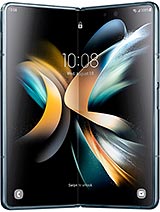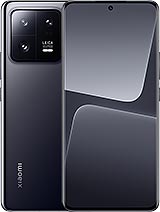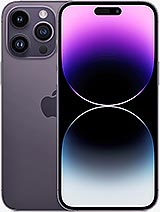introduction
A year later, the note was not returned. The Samsung Galaxy S23 Ultra offers minor, predictable upgrades — camera tweaks here and a new chipset there, for the most part — but how much can you really improve the S22 Ultra in just a year? We'll try to answer that question and see if the new Ultra can stir excitement in ways that the spec sheet can't.v It is an extended spec sheet of course. The Snapdragon 8 Gen 2 is at the heart of the Ultra, and it's built for galaxies - with higher clock rates than competitors get. Qualcomm's latest high-end chip comes with promises of efficiency, and we'll never say no to some extra stamina.
The camera sees the introduction of a new 200MP sensor, up from the Ultras' previous 108MP resolution. A couple of telephotos are still a staple in the lineup and a standout in the market as 10x optical zoom can't be found anywhere outside of Samsung's offerings. The 2023 Ultra is still the only model in the lineup to feature ultra-fast autofocus — more of the incessant rant we just had to include here about not having it on the Galaxy S23's less-than-noteworthy feature.
The otherwise lengthy list of numbers and features below doesn't really bring major changes from the previous generation. Battery capacity remains the same as does the charging rating; the ultrasonic fingerprint reader hasn't gotten optical all of a sudden, proprietary features like DeX and Samsung Pay are still here, and you can count on the display being the best in the business. A small victory is the 256GB base storage - last year's model started at an unreasonably low 128GB - so yay?
Samsung Galaxy S23 Ultra specs at a glance:
- Body: 163.4x78.1x8.9mm, 234g; Glass front (Gorilla Glass Victus 2), glass back (Gorilla Glass Victus 2), aluminum frame; IP68 dust/water resistant (up to 1.5m for 30 mins).
- Display: 6.80" Dynamic AMOLED 2X, 120Hz, HDR10+, 1750 nits (peak), 1440x3088px resolution, 19.3:9 aspect ratio, 501ppi; Always-on display.
- Chipset: Qualcomm SM8550-AC Snapdragon 8 Gen 2 (4 nm): Octa-core (1x3.36 GHz Cortex-X3 & 2x2.8 GHz Cortex-A715 & 2x2.8 GHz Cortex-A710 & 3x2.0 GHz Cortex-A510); Adreno 740.
- Memory: 256GB 8GB RAM, 256GB 12GB RAM, 512GB 12GB RAM, 1TB 12GB RAM; UFS 4.0.
- OS/Software: Android 13, One UI 5.1.
- Rear camera: Wide (main): 200 MP, f/1.7, 24mm, 1/1.3", 0.6µm
- multi-directional PDAF, Laser AF, OIS; Telephoto: 10 MP, f/2.4, 70mm, 1/3.52", 1.12µm, Dual Pixel PDAF, OIS, 3x optical zoom; Telephoto: 10 MP, f/4.9, 230mm, 1/3.52", 1.12µm, Dual Pixel PDAF, OIS, 10x optical zoom; Ultra wide angle: 12 MP, f/2.2, 13mm, 120˚, 1/2.55", 1.4µm, Dual Pixel PDAF, Super Steady video.
- Front camera: 12 MP, f/2.2, 26mm (wide), Dual Pixel PDAF.
- Video capture: Rear camera: 8K@24/30fps, 4K@30/60fps, 1080p@30/60/240fps, 720p@960fps, HDR10+, stereo sound rec., gyro-EIS; Front camera: 4K@30/60fps, 1080p@30fps.
- Battery: 5000mAh; 45W wired, PD3.0, 65% in 30 min (advertised), Wireless (Qi/PMA), 4.5W reverse wireless.
- Misc: Fingerprint reader (under the display, ultrasonic); Stylus (Bluetooth integration, accelerometer, gyro); NFC; stereo speakers; Samsung DeX, Samsung Wireless DeX, Bixby natural language commands, and dictation, Samsung Pay (Visa, MasterCard certified), Ultra Wideband (UWB) support.
We've called the S23 Ultra a Note from the get-go, and the S Pen is really here to stay — despite the usual cynics around the office writing it off after the beloved Note moniker disappeared with the S22 Ultra. Sure, you could have an S Pen (a different stylus) for your fold, but no S Pen case beats the convenience of an on-body stylus like the one you get here.
Samsung Galaxy S23 Ultra unboxing
However, you don't get much else. The Ultra appears in what has become a standard for Samsung's high-end phone packaging — a skinny potential phone-like black cardboard box printed on the lid in a color matching the actual unit inside.
The size of the box guarantees there's no charger inside, but there's still a USB-C cable - despite our continued droning about how 'this time may be the last time you're getting a cable', Samsung actually persists in including one - does that count as winning? There's also a SIM eject pin, which we normally wouldn't mention, but the unboxing section could use the extra words.
Design, build quality, handling
For all the talk about how the Galaxy S23 Ultra isn't all that different from the outgoing model, it's in the design that you can, in fact, notice some tangible and visible changes. It's not a night and day type of difference and you won't be mistaking the S23 Ultra for any other maker's product, nor is it a dramatic departure from the whole Note aesthetic, but there are subtle developments here and there.
Galaxy S22 Ultra (left) next to Galaxy S23 Ultra
Perhaps the most significant of those is the further flattening of the display. The pioneer in curved panels from before the whole foldable movement, Samsung's been continually shifting away from curved edges in the past few years. So much so that in the last two generations, it's been only the Ultra that had any sort of bend to its screen, and the 2023 model all but does away with it completely.
That tweak will be met with applause by flat-screen lovers who insist that curved edges are detrimental to handling. We must admit that this latest refinement does indeed manage to deliver both the more secure grip of flat-panel phones and the premium impression that gentle curves give your fingertips when swiping in from the sides.
Your digits will appreciate the feel while your eyes will be feasting on that glorious OLED display. Adding to the experience are some of the slimmest bezels you'd find on a smartphone, and while the same flat-screen die-hards will insist that more bezels equal better handling, this reviewer has had no issues with misinterpreted touch input on the S23 Ultra.
A similarly painless and trouble-free experience can be reported on the fingerprint reader, which is fast and reliable. Plus, it does its magic without blasting 1000nits of brightness at you in the middle of the night since it's ultrasonic as opposed to optical. That said, some users have been reporting less than stellar experience with even the latest Samsung ultrasonic sensor implementations, so maybe there's a bit of that 'your mileage may vary' at play. In our office, fans vastly outnumber naysayers, so let's go with that.
With the straightening of the screen, Samsung has also redesigned the back panel to match the front's shape, maintaining symmetry. A byproduct of that is the almost flat sides you get this time around - another trend in the recent Galaxy flagship design.
Thinner frame on the S22 Ultra (left) • S23 Ultra (left) has flatter sides
The frame is made of what Samsung calls Armor Aluminum - a specific alloy they came up with that is tougher than your garden-variety aluminum. Meanwhile, both the front and rear panels are courtesy of Corning - it's their latest Gorilla Glass Victus 2, which should be even better than the Victus+ of yesteryear, especially in the event of a drop on concrete.
Naturally, the phone is IP68-rated for dust and water resistance, though Samsung doesn't go above and beyond (below? and beyond) the standard's 1.5m depth for 30 mins requirement like Apple does with the iPhones (rated at 6m submersion for 30 mins).
Circling back to what's changed, we have to mention the new camera rings - the three 'large' cameras have gotten more pronounced outlines. Otherwise the same, the layout is different enough that the openings in cases made for the old phone won't align with the cameras of the new one.
Galaxy S23 Ultra (left) next to Galaxy S22 Ultra
The camera restyling is more of a noteworthy development on the S23 and S23+, which have been tweaked to look like a family with the Ultra now, something that wasn't the case with last year's trio.
Galaxy S23 family shot: Vanilla, Plus, Ultra
The Ultra does maintain its Note proportions - it's an XL-sized phone, so it's not for shallow pockets (in more ways than one). The relatively sharp corners don't help with the pocket situation either, but they carry the Note legacy too, and contribute to the business-like look of the Ultra, compared to the more casually rounded regular S23s.
Galaxy S23 family shot: Vanilla, Plus, Ultra
The S23 Ultra has gained a few grams of heft and now weighs 234g while the previous generation stood at 228g. It's a marginal increase, that you're unlikely to feel, plus the 2023 Ultra is still not as heavy as the iPhone 14 Pro Max, for example. Then again, a Pixel 7 Pro is somewhat tangibly lighter, at 212g.
The feature layout around the perimeter of this Galaxy also maintains continuity with the previous generation and with Galaxies in general. The power button and the volume rocker are on the right, while there's absolutely nothing on the left.


Clicky buttons on the right • Nothing on the left
On the nice flat top plate of the S23 Ultra, there's just a tiny mic pinhole.
In contrast, a whole bunch of things is on the equally flat bottom, including the USB-C port, the main loudspeaker, a couple of mics, and the SIM card slot (which takes one or two nano SIMs, no microSD).
Also here is the silo for the S Pen that got relocated to the left side of the handset for the last 'true' Note, the Note20 Ultra in 2020, and the placement got carried over for the non-Note S-series Ultras. It remains a little odd all those years later but is perhaps a godsend if you're a leftie.


Lone mic pinhole up top • Bottom bits
The stylus itself is entirely identical to the one that came with the S22 Ultra, which in turn was the same you'd find on the Note20 Ultra. You get 4096 levels of pressure sensitivity (found in specs) and 2.8ms latency (nowhere to be found, but we can't see why it would be changed) when scribbling and you can also use the S Pen as a remote of sorts thanks to the Air Actions functionality - it's an 'active', battery-powered stylus that charges when it's inside the phone.
All S Pens are black, with only the clicky cap being recolored to match the frame. Our review unit is the Phantom Black variety (the best one, some say) so you get an all-black S Pen.
Alongside the black, there will also be Green, Cream, and Lavender options widely available at retailers and carriers alike. Four additional colors will be sold exclusively at Samsung.com as well.




Exclusive colors: Graphite • Lime • Red • Sky Blue
Same superb display as last year
The Galaxy S23 Ultra has the same display as last year's model, going by the specs and promised numbers. Theoretically, it's likely a different SKU, if for no other reason than the changed edge curvature. But don't take the lack of change as something bad, because the S22 Ultra's display was already superb.
What we have here is a 6.8-inch QHD+ panel with a 19.3:9 aspect ratio and a 1440x3088px resolution which works out to a pixel density of 501ppi. It's a Dynamic AMOLED 2X display and that alludes to its 120Hz maximum refresh rate (which is also very adaptive) and its HDR10+ certification. There's also the S Pen support which is indeed more a functionality of the display, rather than the stylus itself.
Samsung promises 1200nits of maximum brightness in high brightness mode (HBM) and 1750nits of peak brightness. Those are the same figures we read on last year's specsheet and the S22 Ultra did deliver them.
So does the S23 Ultra - we got 1274 units with adaptive brightness enabled for our standard 75% lit-up area but also 1747 units with a small patch of white that takes up only 10% of the screen. A minor bump in the manually available nits sees the S23 Ultra value go up to 517, and the Extra (manual) brightness toggle will get you up to 831nits - even with no sun in sight.
Now, while we wouldn't for a second think that 1274nits is not enough, between the S22 Ultra's release and this new model Apple introduced the iPhone 14 family. And on the 14 Pro Max, we measured a good 1760nits of max brightness - and that's for the standard swatch size where the Galaxy is some 500nits below. Is it that Samsung's making brighter screens for Apple than it is for its own models, or is it that Apple has just uncapped the brightness on the iPhones for outdoor conditions and Samsung is just being more conservative here? We can only guess.
A new development this year can be found in the Vision Booster feature introduced with the S22 generation, which analyzes the images being displayed and, based on the amount of light hitting the display, it applies different tone mapping to boost shadows and color. Well, on the S23s it's now a three-level implementation, according to the keynote presentation.
In practice, Vision Booster does improve legibility in bright conditions, but it tends to skew colors dramatically, so any color-critical applications will suffer. Then again, color-critical applications aren't best viewed in the mid-day summer sun, to begin with.
Color accuracy
Speaking of color, it's the same two-mode implementation we're used to seeing from Samsungs. The default Vivid mode supports a wide color gamut and delivers a pleasingly lively output. It wasn't super accurate for our DCI-P3 test swatches, but it was accurate enough. Bumping the five-position temperature slider a notch to warm improves things and gets rid of the cold shift in the whites. You can also play around with RGB sliders if you want to adjust colors in this mode.
The Natural mode, on the other hand, is spot-on for sRGB content and it comes with no further tweaking possibilities.
Refresh rate
The Motion smoothness menu on the S23 Ultra gives you two options - Adaptive and Standard. The names don't mean much, because there will be adaptive behavior in both modes, and Standard won't be 60Hz all the time. Effectively, you can treat the modes as different ceilings - up to 120Hz and up to 60Hz - whichever one you prefer.
Within those boundaries, we observed very predictable and logical adaptive behavior. If you're touching the phone, you get the ceiling, if not - you get 24Hz. Unless there's moving content on the screen, in which case the phone will maintain whatever refresh rate is most appropriate - up to 60Hz for browsers or to match a video's frame rate in video playback (24, 30, 48, 60 fps/Hz are supported).
Mind you, some previous implementations wouldn't drop the refresh rate from the maximum, if the screen brightness is itself below certain levels (or would drop it, but not below a specific higher threshold). That didn't appear to be the case on the S23 Ultra and it would go to 24Hz even with minimum brightness set on the slider.
Now, we didn't observe values below 24Hz, but that could very well be another case of our observing the phenomenon actually altering the phenomenon. Then there's the matter of frame rate vs. refresh rate and the phone could be rendering at a lower rate than the screen is refreshing at, as was the case on the S22 Ultra. The thing is, Samsung proudly advertises that the screen can go as low as 10Hz, but there is no way for us to verify that claim.
There's also the matter that while a lot of games do run at the high frame and refresh rates, there were instances where the screen would switch down to 60Hz for titles that we know for a fact support high frame rates (Alto's Odyssey, Dead Trigger 2).
HDR and streaming
As expected, the S23 Ultra's HDR10+ capability is recognized by popular streaming apps and they serve the appropriate files. Naturally, the Widevine L1 support means FullHD streams from DRM-dependent apps like Netflix.
Somewhat of a blemish on the S23 Ultra's otherwise stellar display spec sheet is that the panel is an 8-bit one, meaning just 16 million colors. That 'just' might read like a joke and for some this may be an academic argument, but a 10-bit panel with its 1 billion color gradations will be better at displaying smooth color gradients without introducing banding. How many people will notice it and how many will care are questions we can't answer, though. We're just here to point out this shortcoming, as there are phones out there with 1B color displays.
Samsung Galaxy S23 Ultra battery life
While the non-Ultra S23s come with battery capacity upgrades over the previous generation, the S23 Ultra maintains the same 5,000mAh number as last year's model. With the more efficient Snapdragon 8 Gen 2 inside it, however, and few obvious changes elsewhere, we were expecting better longevity than what the 2022 model could muster.
And that's what we got. In our testing, the S23 Ultra was good for over 39h of voice calls, which is pretty great. More impressive still were the results in the onscreen tests where we clocked over 21h of Wi-Fi web browsing and over 23h of offline video playback. Throw in the very reasonable standby efficiency, and the Ultra's overall Endurance rating worked out to 126h.
With all that said, the iPhone 14 Pro Max still has an advantage in onscreen tests, but it traditionally suffers in the voice call and standby sections of our routine. The Pixel 7 Pro, meanwhile, is significantly behind the other two. As a side note, the Galaxy S22 Ultra results shown here for comparison are for the Exynos variant.
Charging speed
Charging speed on Samsung's flagships has been a hotly debated topic in the office. While we'd be quick to point out that Galaxies typically charge noticeably quicker than their Pixel or iPhone counterparts, it's also true that much faster charging solutions have been available on high-end phones from Chinese brands, phones sold internationally too.
There was also some miscommunication in previous years about the 45W charging capability on some of Samsung's models - the 45W adapter made next to no difference against the 25W in our testing. All of this is why we approached our charging test with a hefty dose of skepticism.
As it turned out, it wasn't all that warranted. We tested with the Samsung 45W adapter and that got us to 100% in just under an hour, but more importantly, the battery indicator was showing a healthy 68% at the half-hour mark. It may not be a substantial improvement over the S22 Ultra, but it's some improvement. Also, S23 Ultra posted significantly better numbers than we recorded on either the iPhone 14 Pro Max or the Pixel 7 Pro, in both disciplines, but especially in the time it takes for a full charge.
We'd also like to point out that we did observe an advantage when charging with the more powerful third-party adapter, compared to the Samsung first-party 25W - and by a bigger margin than we measured last year.
There's also a side note here. We happened to test with a good third-party 65W USB PowerDelivery brick we had handy. That got us to 100% in an hour and one minute (so slower than the Samsung 45W unit), but the S23 Ultra was showing 74% at the half-hour mark (6% more than the Samsung adapter). Both the Samsung and the third-party adapter maintained 43W until the phone got to a 23% state of charge at which point both dropped to 35W of power output.
With all that said, the Galaxy S23 Ultra is still not the phone you can charge in the amount of time it takes to have a quick shower and get dressed, should you realize in the morning that you've forgotten to put it on the charger overnight and you've woken up to a dead battery.
The Galaxy S23 Ultra supports wireless charging, both in and out. The certification listing at the WPC states that the phone complies with the Basic Power Profiler for power transfer up to 4.4W. As is normally the case with Samsungs, that's not really really the maximum power it can take - the Ultra's specs insist it can do up to 15W with compatible pads.
Somewhat related to charging is the option to bypass the battery when you're gaming and you have the phone plugged in. The Ultra will then draw just enough power to keep going without charging the battery, which will minimize heat buildup and reduce battery wear in those heated game sessions. The setting is enabled by a toggle in the Game Booster menu in the Game launcher utility, called Pause USB Power Delivery. The setting was, however, missing on our unit at the time of reviewing so we're expecting it to arrive with an update later on.
Speaker test
The speaker system on the Galaxy S23 Ultra is your conventional hybrid arrangement where the earpiece joins the 'main' bottom speaker to make up a stereo pair. There's no outsourcing of frequencies from one to the other, so each only plays its respective channel, and in fact, the earpiece does not sound underpowered in comparison to the bottom unit. The channels are switched on the fly to correspond to the phone's orientation in space, while the earpiece gets the left channel in a vertical orientation.


Bottom speaker • Earpiece/top speaker (the thinnest of slits between the glass and the frame)
The S23 Ultra earned a 'Very Good' rating for loudness in our test, a notch above last year's model and on par with the iPhone 14 Pro Max and the Pixel 7 Pro. Alongside the increase in decibels, there's a marked generational improvement in sound quality - where the S22 Ultra was merely okay and had a distinct 'small speaker' output, the S23 Ultra has a 'bigger' presence and delivers rich, full sound with a low-end rumble, clear vocals, and nice treble response. We'd rank it on par with the iPhone, both better than the Pixel.
The phone also supports Dolby Atmos enhancement - it can be turned on from Settings. There you can choose between Auto, Movie, Music, or Game sound mode. We did our test with Dolby Atmos OFF and ON (Auto) and we found the output to be mostly identical. The posted samples here are with Dolby Atmos turned off.
OneUI 5.1 on top of Android 13, S Pen stuff
The Galaxy S23 family launches on Android 13 with Samsung's One UI on top, v.5.1. The .1 bit is so far exclusive to the latest trio, but it will be coming to older models too in due time. As expected, 5.1 is not a whole lot different from 5.0 and we've had 5.0 updates for several Galaxies already.
Here's how One UI 5.1 fundamentals look on the Galaxy S23 Ultra.
For a more detailed look at the generic UI stuff, we invite you to have a look at the Galaxy S23 or S23+ reviews, while here we'll just cover the S Pen-related bits that set the ultimate Galaxy apart from the stylus-less models.
That shouldn't be all that difficult, in fact, because there was not a whole lot of pomp surrounding the S Pen at S23 announcement time and little in the way of new features or functionality. Not that the S Pen has been lacking it in the past - it's just that things should all be familiar.
The first time you pull the S Pen out of its silo, you're greeted with a quick start guide - the broad strokes, if you will.
Quick Note was one of the big additions last year, and it's still here. It lets you add entire webpages as scrapbook items in Samsung Note, only you need to use the Samsung Internet browser - it doesn't work with third-party ones. Then there are the cookie consent popups that would show up several times in the captured note, but if you're not in Europe, you should mostly be fine.
Handwriting recognition is supported in 100 languages - or at least that's how many options there are on the menu, though some of them are, say, various nationalities of English and German. No word on latency improvements this year, so we'll assume it's the same 2.8ms in Samsung Notes thanks to the AI point prediction. Semi-related, we counted 39 languages that the Galaxy can translate from and 108 positions of languages it can translate into.






Handwriting recognition • Translation
As has been the case for several generations of S Pen-equipped Galaxies, the stylus here is an active one and it has a battery inside as well as a gyro, an accelerometer, and Bluetooth connectivity for communicating with the phone without immediate proximity. This enables Air actions - a set of gestures that can be set to execute actions in various apps including the Gallery and browsers (Samsung's own, and also Chrome), but perhaps most usefully - the Camera.
Then again, we'd say button presses are a lot easier to master than gestures, which we reckon take some dedicated effort to learn and put to use. And that's a sentence we've been repeating for several years with none of us Note/Ultra users actually getting around to doing it. But if it works for you, it works for you.
Staples of S Pen functionality is here to stay, of course. Screen-off memo lets you just pull out the stylus when the phone is on standby and go right ahead and write a note on the black screen.
When you pull out the S Pen with the phone unlocked, the Air command menu appears (that's the default setting, you can turn it off). There are pre-set shortcuts here, which you can customize, and those can be either S Pen features or shortcuts to apps.






Screen off memo • S Pen settings • More settings • Behavior upon removal • Air Command
Advanced screenshot capture is one of the S Pen's main use cases. Smart select allows you to take differently shaped screenshots, extract text from them, or pin them on the screen. Alternatively, you can create short GIF animations. Then there's Screen Write which takes a fullscreen snap that you can write on with the full set of different pens and brushes (and then crop, if you will). Screen Translate can translate single words into a pre-selected language if you just hover over them.




Screenshots and related functionality: Smart select • Smart select • Save link • Screen write
There are numerous other smaller use cases for the S Pen as part of the Air view set of actions. For, example, you can hover over an image in the gallery for an enlarged preview, or over a calendar entry for more details. You can also scroll up and down by hovering the S-Pen over the edge of the screen.
Perhaps loosely related to the S Pen, from a productivity standpoint, is the powerful split-screen multi-window functionality that Galaxy S23s have - all of them, but we reckon it's all the more important on large-screen Ultra. You get to pick arbitrary split-screen ratios, you can save favorite app pairs, and pop-up windows are supported (and you can even change their opacity) - essentially the only thing better for multitasking than the Galaxy S23 Ultra is... the Galaxy Z Fold4.
Performance and benchmarks
The Galaxy S23 Ultra, as is the case with the rest of the family, is powered by the Snapdragon 8 Gen 2 chipset with a twist - it's a Samsung-exclusive version with an overclocked CPU and GPU compared to mainstream SD8G2. We suspect this version will become available as a Snapdragon 8+ Gen 2 later this year. Additionally, there is no more regional divide where some countries get an Exynos version - all Galaxy S23 models use the Qualcomm SoC.
The key developments compared to the Gen 1 model are 35% higher performance and 40% improved efficiency of the CPU thanks in no small part to a reworked core configuration (1+2+2+3 in place of the 1+3+4 of before), 25% performance, and 45% efficiency bumps on the GPU side, and support for new, faster memory technologies (LPDDR5X and UFS 4.0).
This Samsung-exclusive version of the chip has the X3, 2xA715, 2xA710, and 3xA510 Cortex CPU cores clocked at 3.36GHz, 2.8GHz, 2.8GHz, and 2.0GHz. It's that prime Cortex-X3 core that sets the CPU apart from the regular version of the chipset, where it is clocked at 3.2GHz (technically, 3.19GHz).
The Adreno 740 GPU, meanwhile, is clocked at 719MHz in the Galaxy S23 phones, compared to 680MHz in the rest of the SD8G2-powered models.
All Galaxy S23 phones use LPDDR5X RAM and all but the base version of the Galaxy S23 Ultra have 12GB of it, to go with either 256GB, 512GB, or 1TB of UFS 4.0 storage. The entry-level version Ultra, if you can call it that, has 8GB of RAM and 256GB of storage. Our review unit is the 12GB/512GB spec.
The usual benchmark suite follows below, starting with GeekBench. You can see here in the single-core result the magnitude of the advantage those extra 0.17GHz give the Galaxy over the iQOO 11 and it's mainstream' Snapdragon 8 Gen 2 - it looks about right to us. The OnePlus 11 underperformed here, for one reason or another.
'Hi, can you send me that?'
Samsung's camera promo video was all about how everyone wants you to send them your Galaxy pics - as if Samsung only just now started making some of the best cameraphones. It's quite the opposite, of course - the S23 Ultra builds on a long-standing legacy of great picture-taking devices and brings an all-new (and exclusive) primary unit, plus some extra refinement.
The main camera uses the Samsung HP2 sensor - a 200MP monstrosity that they somehow managed to fit in a 1/1.3" optical format thanks to tiny pixels (0.6µm). Somewhat curiously, this image is smaller than the HP1 (200MP, 1/1.22", 0.64µm), which Samsung sells to other makers like Motorola, but we don't doubt Samsung kept the best to itself.
The sensor has what the company calls Tetra2pixel RGB Bayer Pattern color filter, which is to say it groups 16 pixels into 1 and effectively outputs 12MP images by default. You'd think that 200/16 equals 12.5, and you'd be right, but the reality is that the photos come out at 4,000x3,000px instead of 4,080x3,060px - with a minor crop. There is, of course, a 200MP full-res mode (16,320x12,240px) as well as an intermediate 8,160x6,120px 50MP option, both of which we'll also explore.
The HP2 has a 'Super QPD' autofocus, which is Samsung's way of saying it can detect phase changes in both the horizontal and vertical direction, giving you more dependable autofocus across a wider range of subjects and use cases. That's one area where the HP1's 'Double Super PD' is inferior since it only works in the horizontal direction.
The lens that's in front of that 200MP HP2 has a 23mm equivalent focal length - Samsung's main cameras have been getting wider but seem to have settled on 23mm. The lens has an f/1.7 aperture, and it's also stabilized.
The rest of the rear cameras are unchanged in their specs, and for the teles - in their underlying hardware as well. The ultrawide replaces the IMX563 of the old model with an IMX564, and it's still a 1/2.55" sensor with 1.4µm pixels and dual pixel autofocus - another generation, another year where only the Ultra of all Galaxies gets to have autofocus on its ultrawide. The lens has an aperture of f/2.2 and covers a field of view of 120 degrees.
The teles have an IMX754 each - a 10MP sensor (1/3.52", 1.12µm) from which the Ultra squeezes 12MP images, as usual. The aperture on the 3x zoom (69mm equivalent) module is f/2.4, while the periscope 10x (230mm) Tele's is f/4.9. Both lenses are stabilized.
There's one more new sensor on the Ultra - it's not just the 200MP main unit - all S23s get a new selfie camera. It's got 12MP of resolution from the S5K3LU imager (1.12µm, likely 1/3.24"), while the lens has an equivalent focal length of 26mm (going by Samsung's specified 80-degree coverage) and an f/2.2 aperture. As has been the case with high-end Galaxy selfie cameras for years, this one too has autofocus.
The camera app is the same as you'd find on every Samsung phone these days. Swiping left and right will switch between all available modes, and there's an option to re-arrange or remove some of the modes from the viewfinder. Vertical swipes in either direction will switch between front and rear cameras.
There are four zoom shortcuts on the viewfinder - .6x, 1x, 3x, and 10x. Tapping on any of them will reveal more zoom levels - 2x, 30x, and 100x.
The full resolution mode on the primary camera is triggered from the aspect options, which is a rather unintuitive bit, if you're coming from other brands, but that's been Samsung's way.
The settings icon is located in the upper left corner of the screen and gives you fine control over the cameras. You don't get separate setting screens for photos and video since the options aren't that many in total. Like grid lines, location data, etc., the usual stuff can be found there. You can also turn on and off the Scene optimizer.
The selfie viewfinder offers two zoom modes - wide and standard (cropped). This is quite common among Galaxy phones.
All cameras support Night Mode, including Auto Night Mode, which works the same way as on iPhones and Xiaomi devices.
There's a Pro mode, too. You get granular exposure controls and manual focus with peaking, up to 30s shutter speed control for all cameras.
Expert RAW mode is available, too - and now, it's sort of built into the main camera app as a mode instead of being a separate app. You still have to unlock your phone to use it though (the quick launch camera shortcut doesn't work), and you can't set it as a mode on the mode carousel - you have to run it from the 'More' tab (that's an odd limitation if we've ever seen one).
It does, however, unlock full manual control and the ability to retain both the built-in camera app's multi-frame processing and the raw image data for further edits. It can capture images with all five cameras and outputs both JPEG and DNG files.
Those DNG files can be edited in Lightroom Mobile, which has Samsung's full image data embedded through the built-in lens profile. You can do some great things using Expert RAW but should know its limitations too. It gives you the ability to play with the color and dynamic range to a much greater extent than with the default jpeg or their files.
Daylight photo quality
In broad daylight, the Galaxy S23 Ultra takes great-looking pictures that have a distinctly different look when compared to the previous model. We're getting more vivid colors overall with a general tendency towards extra warmth and also brighter shadows (possibly slightly brighter exposures altogether) - all of this leading to images with more 'pop'. In a way, this looks like a return to traditional Samsung processing, whereas the S22 Ultra was more conservative and more 'classically photographic' in its interpretation of reality - we're hoping that makes some sense.



Daylight comparison, main camera (1x): Galaxy S23 Ultra • Galaxy S22 Ultra
Try not to read that as a negative - we like our images punchy, plus you get the sorts of Pro and Expert RAW modes to play around with and get photos better tailored to your liking. As default out-of-camera(phone) processing goes, this more universally likable rendition is quite logical. The more photographically inclined folk will do the extra work if a less expressive result is needed - our resident photographer edits every single photo he takes on his smartphone anyway.
Regardless of where you stand on the above development, there's plenty of objective improvement in the Galaxy S23 Ultra's photos, to be seen when you look from up close. Images are now notably sharper all the way to the corners of the frame - the old one wasn't perfect in this respect, even if the corner softness wasn't so pronounced as to be an issue.
Also improved is the noise performance, an area where the S22 Ultra had struck as uncharacteristic of Samsung's high standards for noise reduction. Admittedly, it appears to have been improved on the older model as well, but even so, at anything above ISO 100, or in shadows and out-of-focus areas - the S22 Ultra rarely looks pristine. The S23 Ultra does.


Daylight samples, main camera (1x), 12MP
The 200MP imager allows for some high-res stills, and there are both 50MP and 200MP modes. In 50MP mode you do stand to gain some detail and definition and we'd say that comes with no penalty in dynamic range (which is excellent, by the way). You could potentially grab one of these and downscale it yourself to 12MP if you'd like to tweak sharpening and clarity and those kinds of things, but Samsung's default ways don't look objectionable to our eyes in the first place.



Daylight samples, main camera (1x), 50MP
200MP shots are more of a tough sell. The file sizes get way too large, and the detail benefits can't keep up, plus we're seeing a drop in dynamic range. The 50MP mode makes sense, the 200MP one - less so.



Daylight samples, main camera (1x), 200MP
The ultrawide's one major improvement this year is noise performance - things are just cleaner now. A small bump in detail can also be spotted, but just maybe, and only if you look long and hard. We wouldn't even say there's any of that added saturation and warmth - these colors look very much the same to us. Once again, these are comparisons against the S22 Ultra in its current state, a year after release, and it does appear to have improved.

Daylight comparison, ultrawide camera (0.6x): Galaxy S23 Ultra • Galaxy S22 Ultra
With that said, the S23 Ultra's ultrawide does capture really nice photos. The colors are likable, the dynamic range is plenty wide, detail is very good. There's also the matter that you can shoot close-up subjects with the Ultra's ultrawide thanks to its autofocusing capability - something you're being denied on the lesser S23s for another year.
Daylight samples, ultrawide camera (0.6x)
Interestingly enough, at the 3x zoom level, it's the new phone that produces grainier images, if only slightly so. They do have a crisper detail rendition, perhaps precisely because of a tuned-down noise reduction, but neither property is a significant advantage in either direction. Perhaps more notable is the new model's more aggressive HDR, which lifts up the shadows and produces images that look brighter overall. Solid performance altogether, with minimal changes from last year.

Daylight comparison, telephoto camera (3x): Galaxy S23 Ultra • Galaxy S22 Ultra
Zooming in further, we get a bit more of the same - a marginal increase in noise in the shadows coming from last year's model, and an overall brighter appearance despite comparable reported exposure values. The detail remains solid.


Daylight comparison, telephoto camera (10x): Galaxy S23 Ultra • Galaxy S22 Ultra
To quote ourselves from last year: "The number of samples we'll give you of the 30x, and 100x zoom levels should be telling of what we think of them."



Daylight samples, telephoto camera: 10x • 30x • 100x
Portrait mode
As before, Portrait mode on the Ultra works at both the 1x and 3x zoom levels, each sourced from the respective camera - there is no main camera digital zoom shenanigans. What has changed is the quality you get out of that 3x zoom camera - it now captures notably sharper and better-detailed photos, even in more demanding light.
Portrait mode comparison, 3x: Galaxy S23 Ultra • Galaxy S22 Ultra
The main camera's results are somehow not quite as impressive - the older model captures better subject detail.
Portrait mode comparison, 1x: Galaxy S23 Ultra • Galaxy S22 Ultra
With that said, both zoom levels come with excellent subject detection, and there are fewer missteps alongside the border between subject and background than before, small as they may have been on the S22 Ultra.
Samsung made a point in the S23 series presentation about improved depth mapping, with a particular mention of glasses, so we figured we'd give it a quick test. As it turned out, the claims hold water - the S23 Ultra picked out the frame of the glasses with more precision than the S22 Ultra, both substantially better than the Pixel 7 Pro we had on hand.
Portrait mode comparison, 3x: Galaxy S23 Ultra • Galaxy S22 Ultra • Pixel 7 Pro
Portrait mode comparison, 1x: Galaxy S23 Ultra • Galaxy S22 Ultra • Pixel 7 Pro
A common thread at both 1x and 3x is the added warmth and a faint but noticeable yellow tint to the skin - the S22 Ultra was a lot more accurate in its colors. We're not sure if this is part of the new model's warmer color rendition in stills in general, or a conscious decision for shots of people, unrelated to the main camera's processing in other situations.
Speaking of, here's a handful of non-portrait photos of people, for those who asked.
Non-portrait mode people shots, 1x
Selfies
The new 12MP selfie camera, which the S23 Ultra shares with the rest of the family, maybe a nominal upgrade on the other models, but here it's a downgrade, compared to the 40MP unit on the S22 Ultra - nominally, again.
In practice, you'd be getting more or less the same selfies. The increase in resolution doesn't necessarily translate in all that much extra detail - if anything, the older camera had a nicer, more natural rendition.
Selfie comparison: Galaxy S23 Ultra • Galaxy S22 Ultra
That's not to say the S23 Ultra's selfies are bad - on the contrary. Dynamic range is excellent, colors and skin tones are accurate (no yellow tint), and noise is much better controlled than on the S22 Ultra.
Low-light photo quality
In low light, the S23 Ultra has an Auto Night Shot feature that automatically applies some level of extra processing - an auto Night mode of sorts. It won't kick in for all scenes, but when it does, a yellow crescent pop-up will inform you of it. Tapping that same crescent will make it turn white and it will disable the auto Night mode. The phone will remember in which state you left that setting the next time you launch the camera - keep that in mind to avoid surprises.
Expectedly, the Ultra's main camera captures competent low-light photos. The colors are well preserved and the auto-white balance didn't show issues with warm or mixed lighting. The detail is abundant and rendered nicely, and the noise is minimal.


Low-light samples, main camera (1x), Auto Night mode
The Auto is typically good enough to get you balanced exposures with well-preserved highlights and good development in the shadows. For dimmer or more contrasty scenes, however, you'll want to ensure you're in the dedicated Night mode to get the most out of the darker areas. And there are some benefits to be had with point light sources too. Detail does get a bit more artificial-looking thanks to heavier sharpening, more or less a necessary Night mode evil.


Low-light samples, main camera (1x), Night mode
Whether it's with Auto Night mode on or in the standalone Night mode, the S23 Ultra shows an improvement in captured detail compared to last year's model - you just get better definition and less noise. There's little to separate the two when it comes to dynamic range or color.


Low-light comparison, main camera (1x), Auto Night mode: Galaxy S23 Ultra • Galaxy S22 Ultra


Low-light comparison, main camera (1x), Night mode: Galaxy S23 Ultra • Galaxy S22 Ultra
The ultrawide camera's low-light performance isn't anything special, strictly speaking, but it's okay. Dynamic range is good in the Auto Night mode, though you'd still be better off forcing the Night mode for more challenging scenes. Color is well preserved and we didn't encounter iffy white balance issues here either. On a pixel level, there's quite good detail in better-lit areas, though shadows and lower mid-tones can be overrun with noise.


Low-light samples, ultrawide camera (0.6x), Auto Night mode
It's remarkable how much of an improvement Night mode can bring to those, actually. These shots are notably cleaner and better detailed, with none of that excessive sharpening we mentioned above. The dynamic range gets a healthy boost too. Ultimately, you shouldn't trust the Auto when shooting on the ultrawide - do the extra step and go into Night mode.


Low-light samples, ultrawide camera (0.6x), Night mode
Side by side, the ultrawide of the S23 Ultra and the S22 Ultra look comparably meh in Photo/Auto Night mode, each with its own flaws. But with the full-on Night mode action, the new model has the upper hand.


Low-light comparison, ultrawide camera (0.6x), Auto Night mode: Galaxy S23 Ultra • Galaxy S22 Ultra


Low-light comparison, ultrawide camera (0.6x), Night mode: Galaxy S23 Ultra • Galaxy S22 Ultra
Moving on to some zoom action, the 3x telephoto is also best used with Night mode firmly engaged - the Auto shots can be pretty blotchy.


Low-light samples, telephoto camera (3x), Auto Night mode
Night mode does make a ton of difference, however - it cleans up the noise and sharpens up the detail in the shadows. Highlights get a treatment too and dynamic range gets a boost, though the Night mode shots do tend to be a little darker overall.


Low-light samples, telephoto camera (3x), Night mode
We may not have spoken fondly of the Photo mode results of the 3x zoom on the S23 Ultra, but it's still a significant upgrade over the previous model's short zoom camera - both in Photo mode and in Night mode.


Low-light comparison, telephoto camera (3x), Auto Night mode: Galaxy S23 Ultra • Galaxy S22 Ultra


Low-light comparison, telephoto camera (3x), Night mode: Galaxy S23 Ultra • Galaxy S22 Ultra
The 10x zoom is less dependable in the dark, Night mode, or no Night mode. Some darker scenes will be outsourced to the 3x camera making for rather poor results. When there's some light to work with, the 10x tele does work on its own, but images still turn out rather noisy.


Low-light samples, telephoto camera (10x), Auto Night mode
Night mode rectifies this to a great extent, though it can only save the scenes where there's enough light for the phone to actually use the 10x module - the 3x-sourced 10x shots remain pretty bad. The other ones clean up well, though, and you can have yourself some night-time shots of decently-lit architectural details.


Low-light samples, telephoto camera (10x), Night mode
The 10x camera on the S23 Ultra, as was the case with the 3x, may be using the same hardware as last year's model, but it still manages to show improved image quality overall.


Low-light comparison, telephoto camera (10x), Auto Night mode: Galaxy S23 Ultra • Galaxy S22 Ultra

 Low-light comparison, telephoto cam era (10x), Night mode: Galaxy S23 Ultra • Galaxy S22 Ultra
Low-light comparison, telephoto cam era (10x), Night mode: Galaxy S23 Ultra • Galaxy S22 Ultra
Once you're done with the real-world samples, head over to our Photo Compare tool to see how the Samsung Galaxy S23 Ultra stacks up against the competition.


Samsung Galaxy S23 Ultra against the iPhone 14 Pro Max and the Pixel 7 Pro in our Photo Compare tool
Video recording
The Galaxy S23 Ultra records video up to 4K60 with all five of its cameras. The main camera on its back can also record 8K, and it can now do it at 30fps - gone is the 24fps limitation of previous Galaxies. Video stabilization is available in all these modes, but you can also turn it off if you have alternative means of supporting the phone.
8K capture is always encoded in h.265 HEVC, while for the other modes, you get to choose between h.264 or h.265. Regardless of video mode, audio is recorded in stereo and gets a 256kbps bit rate.
8K footage (80Mbps bit rate) is a meaningful improvement over the previous model, and it's not just the extra 6 frames per second. For one, it now uses the full width of the sensor, unlike the S22 Ultra, which only captured a relatively tight center crop. It's also sharper and better detailed than what the old model could muster, and it offers an advantage over this very Galaxy's 4K - apparently, that detail we saw in 50MP stills translates into video as well. Having said that, the point of shooting 8K on our smartphones still eludes us.
Give us some of that good old 4K any day. 30fps and 60fps clips (50Mbps and 80Mbps, using h.264) have essentially the same quality, which is always nice to see. It's some very good quality, too, with great (if not the most naturally rendered) detail and no noise. The dynamic range is respectable, the white balance is on point, and the colors have just the right amount of saturation (which you may have to trust us on, given the dreary weather in the usual samples).
The ultrawide doesn't discriminate between 30fps and 60fps, and both modes produce identical results. The thing is, however, they're not so praiseworthy - particularly in terms of sharpness. The older Ultra's ultrawide videos, which weren't class-leading or anything, are sharper and better detailed. We have no grounds for complaint about the global parameters - color and dynamic range leave little to be desired.
You probably expect it by now, but let's confirm that 4K30 and 4K60 clips have the exact same quality on both telephotos. There are no unpleasant generational surprises, and the S23 Ultra's zoomed-in videos are looking pretty great - nice and sharp on the 3x, a bit less so, but still perfectly acceptable on the 10x. Some minor tweaks in color and contrast in the processing make for a slightly different look this year, but there's nothing objectionable about the end result.
The S23 Ultra's main camera records excellent low-light videos. It captures a wide dynamic range, contains the highlights with minimal haloing, and develops the shadows quite respectably without turning them into a noise-fest. Colors also don't appear to suffer from any degradation at night.
Here's a different scene to illustrate the improvement in quality from the S22 Ultra to the S23 Ultra.
The ultrawide wasn't much good during the day, but in the changed context of ultrawide at night, it's actually delivering a comfortably above-average result. While it's not as sharp and detailed as the main camera, it's got good detail still, and it maintains excellent global properties.
The tiles aren't fans of the dark and record rather noisy videos. That said, the 3x zoom clips can be considered usable.
Both the main camera and the ultrawide on the S23 Ultra offer great electronic stabilization. Walking shake is smoothed well, handholding the phone and pointing it in one direction makes for nearly flawless steadiness, and pans don't introduce any unwanted abrupt movements.
Both teles show an improvement in stabilization, and where the S22 Ultra had some residual fine shake in its zoomed-in clips, the S23 Ultra minimizes that to just a gentle floatiness.
Selfie videos are very high quality and capture excellent detail, wide dynamic range, and generally accurate colors (unless the sun's blazing through your hair and directly into the camera, that is). We also didn't observe any focus hunting, which could be the bane of autofocusing selfie cameras. The one issue is that the otherwise excellent stabilization robs you of some coverage, and fit your head in the frame (in landscape) could be problematic. Even a very short selfie stick will do the job, though.
Here's a glimpse of how the Galaxy S23 Ultra compares to rivals in our Video compare tool. Head over there for the complete picture.
Competition
In the rarefied atmosphere, the Galaxy S23 Ultra calls its home market segment, purchasing decisions are likely not necessarily driven by value for money, at least not as a top priority. Perhaps more important here are factors like having the absolute best camera, getting all the productivity, or less reasonable but still entirely understandable motivators like brand loyalty or having the latest and greatest there is.
With those last couple of thoughts in mind, the S23 Ultra's standing is challenged by the Z Fold4 - isn't a cutting-edge foldable more modern and awesome than a bar that's, in principle, the same as any other? And the fact that it's a Galaxy foldable helps too. The Fold can also win a productivity battle with the Ultra - easily, thanks to a way larger display and, yes, S Pen support too, even if the stylus is not quite as convenient to store as the Ultra's. But the bendy Galaxy is merely an okay cameraphone, and that's where the Ultra's victory isn't up for debate.
Cameraphones from Xiaomi are among our favorites, but it's hard to name a Galaxy rival at this point in time. The Mi 12s Ultra is a remarkable picture-taking device, but it's limited to the Chinese market. The Mi 11 Ultra may be international, but can't really be found in stores, plus it's now a full two years old. We'll go with the 13 Pro for its spec sheet - promising in many ways, but it's zoom-challenged, not to mention we haven't seen it in person yet.
How about a Google Pixel 7 Pro then. Once an undisputed photo-taking champ, if a relative niche one, the Pixel is no longer one-of-a-kind in its capabilities. But the 7 Pro does capture great photos, and its 5x zoom might be just what you're missing on the Galaxy. There's also the tiny detail that the Pixel is way less expensive than the S23 Ultra (call it a $500/€500 difference), and you may be giving a second thought to that 'money is no object' preamble.
Finally, a rather obvious alternative presents itself in the shape of an iPhone 14 Pro Max. The iPhone stands out as the best option for video capture, and it's got a compelling camera system altogether, even if it can't compete with the Galaxy for reach. Then come arguments of the non-quantifiable kind like status, brand preference, and bubble color.


![]()

Samsung Galaxy Z Fold4 • Xiaomi 13 Pro • Google Pixel 7 Pro • Apple iPhone 14 Pro Max
Verdict
The ultimate Galaxy smartphone for 2023 (that doesn't bend in the middle) doesn't bring anything ground-breakingly new and exciting - how's that for a single con?
Indeed, the Galaxy S23 Ultra's one flaw is perhaps entirely not it's own - the S22 Ultra was just too good. Following up on that was always going to be little more than polishing touches that inevitably lack the wow factor. But if you can switch into managing expectations mode, rather than moan about the lack of innovation or originality, you'll appreciate this year's Ultra for its maturity.
An increase in battery life, faster charging (only slightly, but still quicker than Apple or Google will give you), and one of the best displays in the business - that's a strong start on the fundamentals. The camera, too, is improved, beyond just the 200MP number on the posters, cementing the Ultra as one of the top cameraphones on the market. And then there's the S Pen - a proposition as unique in its utility in 2023 as it was last year. None of this is novel or thrilling stuff, but it all adds up.
With all of that in mind, the Galaxy S23 Ultra's only verdict can be 'Highly recommended'.
Pros
- Traditional Note form factor, improved handling, still premium as ever.
- S Pen has wide-ranging functionality for work and play, and is virtually without competition.
- Wonderful display.
- Excellent battery life, and faster charging than big-name competitors.
- The ultra-grade camera system is one of the best on the market; the primary module is a genuine improvement, and the zooming capability is hard to rival.

















































































Enregistrer un commentaire